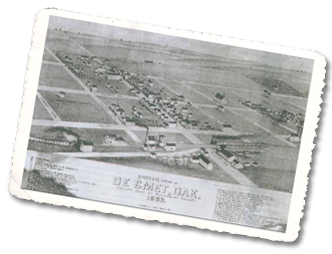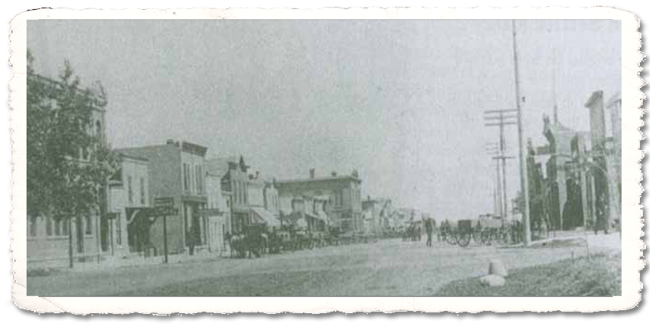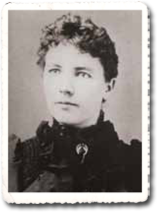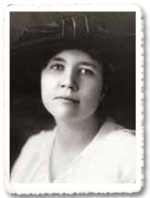
About 10,000 years ago a large glacier covered the De Smet area. The glacier moved southward forming the west side of the Missouri River. As the glacier retreated, it left large stagnant blocks. These blocks formed the numerous South Dakota sloughs and lakes. Lake Thompson, near De Smet, is the largest glacial lake in the state. The American Indian entered the South Dakota area during the period, between 5,000-8,000 years ago.
In 1803, President Thomas Jefferson assigned Meriwether Lewis and William Clark to explore the territory that would become the state of South Dakota in defense of the Louisiana Purchase. After exploration, Clark referred to South Dakota as the “Land of Plenty”.

The present North Dakota and South Dakota area became the Dakota Territory in 1868. The history of Kingsbury County begins in 1838 when John C. Fremont of the US Army and Dr. Nicolet came through this section. The early settlers found a sea of waving grass when they arrived in the late 1800’s. Prior to 1877, the hand of the white man had not disturbed the soil or erected habitations in Kingsbury County except the driving of stakes by the government surveyors. Kingsbury County was named for George W. Kingsbury of Yankton, a pioneer, editor, historian and legislator.
With the railroad came many tents of workmen who added to the towns. The graders were closely followed by the tracklayers and then the locomotive. The first train came to De Smet in 1880.
At the May 9 meeting of the board, De Smet was named county seat. It was plotted in 1880 and incorporated in 1883. Years later it was dubbed “Cream City,” because of the high cream production.
The county seat got one of its first buildings in 1880, when Henry Hinz Sr. built a recreation place. Structures started going up rapidly along the business street, and the lumber was hauled mostly from Volga before the first train came.
The first family of De Smet was that of Charles P. Ingalls. He was the timekeeper for the railway construction crew at his camp on the shore of Silver Lake, a mile east of where De Smet was to be built. As construction work ceased in the fall of 1879, he and his wife, along with four daughters remained in the timekeeper’s building through the winter and spring and built what was to become Ingalls’ store.
By 1883, De Smet was a typical early prairie town. De Smet had about 60 buildings including grocery and provision stores, wagon shops, lumber yards, banks, a drug store, newspaper companies, a flour mill, a church, a school, an elevator, two attorneys, a harness shop, one hotel and two real estate dealers.
On November 2, 1889, President William Harrison issued a proclamation announcing the admission of South Dakota as a state of the great republic of the United States of America. The late 1890’s were years of progress, which brought about the passing of the sod shanty. With the 29th century came the telephone, rural mail routes and the automobile. Progression also brought electric lights by 1910 and the radio by 1920. De Smet was among the early ones to have cement sidewalks and the surfaced streets by the 1950’s.


Laura Ingalls Wilder
Beloved children’s book author, Laura Ingalls Wilder (1867 - 1957), was one of the first residents of De Smet, SD. Laura is best known for her Little House series of books, the majority of which were set in the quaint town of De Smet, including By The Shores of Silver Lake, The Long Winter, Little Town of the Prairie, These Happy Golden Years, The First Four Years and On the Way Home.
The Ingalls family established a homestead claim in the Dakota Territory outside De Smet, where in the spring of 1879 Charles Ingalls accepted a railroad job. After staying the winter in the Surveyor’s house, the Ingalls family watched the town of De Smet rise up from the prairie in 1880. The following winter, 1880-1881, became known as one of the most severe winters on record in the Dakotas, which Laura later described in her book, The Long Winter. Once the family was settled in De Smet, Laura attended school, made many friends, and met homesteader Almanzo Wilder (1857-1949). This time in her life is well documented in the Little House books.
At the age of 15, Laura accepted her first teaching position, and over the next three years, divided her time between teaching at rural schools and attending school herself in De Smet. Laura stopped teaching when she married Almanzo on August 25, 1885, joining him in a new home on his tree claim north of De Smet, and agreed to help him make the claim succeed. On December 5, 1886 she gave birth to Rose Wilder and later, an unnamed son, who died soon after birth in 1889.
The people of De Smet have preserved Laura’s frontier. Visitors can walk the streets that Laura walked, visit the stores that the Ingalls shopped at, see Laura’s country school, take a tour of the Surveyor’s Shanty, visit the house that Pa built and visit Laura’s home on the prairie at the Ingalls Homestead. To see Laura’s stories come to life, there is no better place than the Little Town on the Prairie. Travelers young and old can learn more about the author and her family and see firsthand the places she described in her “Little House” books. Visit Laura’s historic homes, enjoy prairie life with a covered wagon ride and take a stroll down De Smet’s main street.

Rose Wilder Lane
Rose Wilder was born in De Smet, SD on December 5, 1886. She was the first child of Laura Ingalls and Almanzo Wilder and the only grandchild of Pa and Ma Ingalls. She was a renowned American journalist, travel writer, novelist and political theorist - noted as one of the founding mothers of the American Libertarian Party.
Rose taught herself several languages and began her writing career in 1910 when she took several free-lance jobs for needed cash. After initially accepting a job as an editorial assistant for the San Francisco Bulletin, Rose launched a free-lance writing career and wrote for many famous publications, including Harper’s, Saturday Evening Post, Sunset, Good Housekeeping and Ladies’ Home Journal. Lane also worked around the globe as a correspondent, and was reputed to be one of the highest-paid female writers of the early twentieth century.
It was Rose who actually encouraged her mother to launch her own writing career when Laura was in her sixties, and document the memories of her frontier childhood. Rose Wilder Lane passed away on October 30, 1968 at the age of 81 She was the last remaining descendant of Charles and Caroline Ingalls.
No Results to Display.